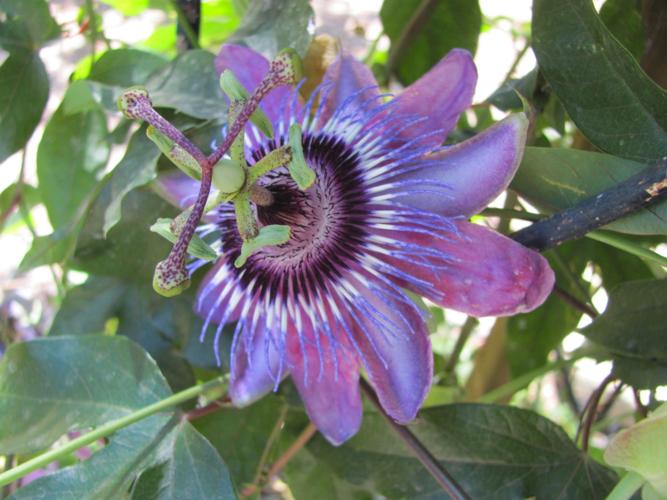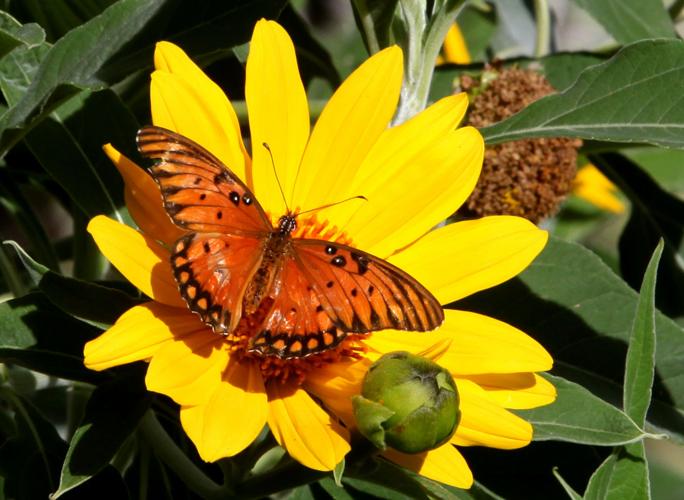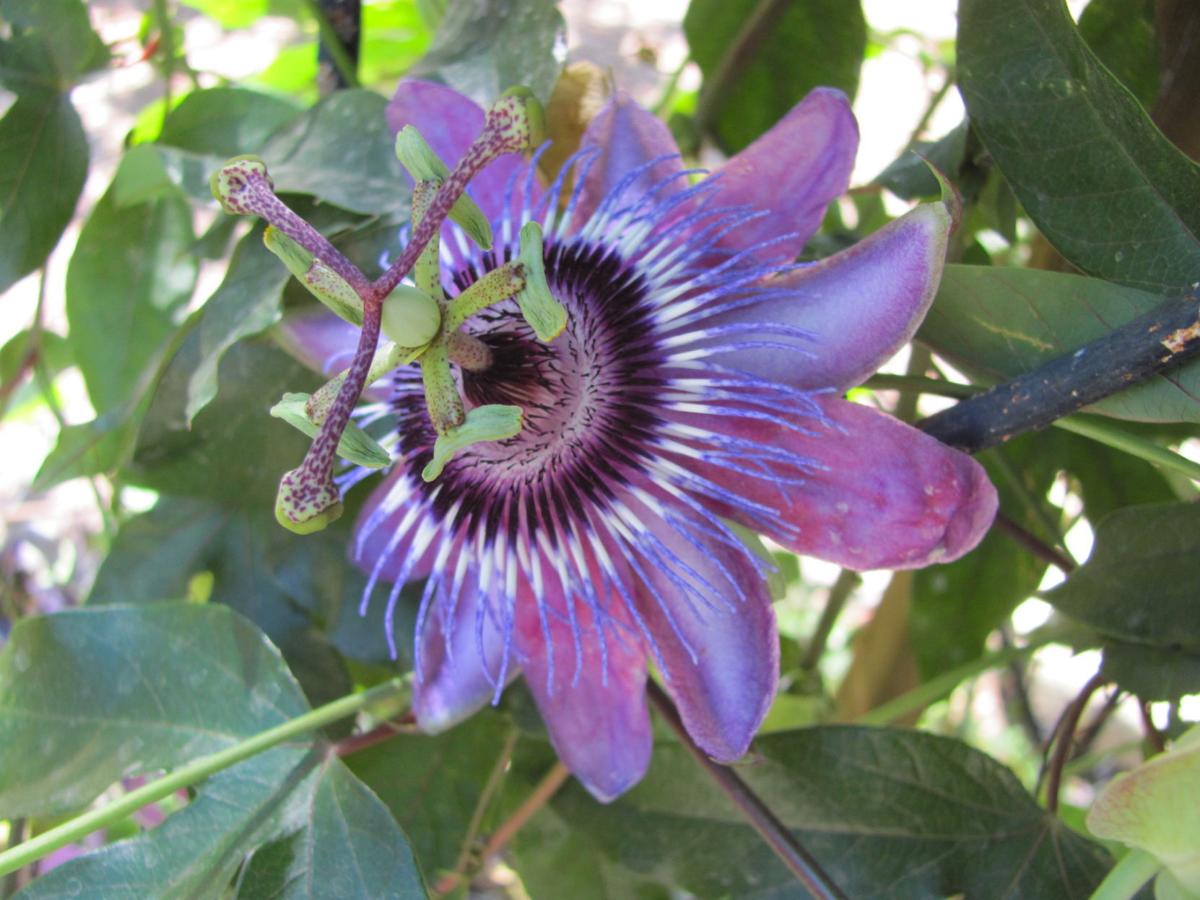Passionflower vines (Passiflora spp), also referred to as passionfruit vines, are a collection of many species. Four are native to our desert: P. arizonica, P. mexicana, and P. bryonioides are native to Arizona while P. arida is native to Mexico’s portion of the Sonoran Desert.
These vines not only bear exotic, spectacular flowers, but also serve as caterpillar food for the equally spectacular Gulf Fritillary (Agraulis vanillae) butterflies as well as various moths. They climb via tendrils, like grapevines, and grow stems of 10 feet or so, making them a great option for fences and trellises. The flowers of most species bloom at night, with the exception of P. arida which blooms in the daytime.
When choosing a species, it’s important to consider that varieties of P. arizonica may have foul-smelling foliage. It used to be called P. foetida! Likewise, P. mexicana has been reported to smell like mothballs. The native varieties may be challenging to find in nurseries; Desert Survivors has offered P. arizonica periodically.

Gulf Fritillary butterflies are native to southern portions of North and South America. They are attracted by passion fruit vine which serves as food for their caterpillars.
If you want to consume the fruit, Passiflora edulis is a non-native species that is available in local nurseries and can be used for fruit production. Ripe passionfruit has a delicate sweet and tart flavor, although this will depend on the species, variety, and growing conditions. Keep in mind that the fruit is poisonous until it ripens, as are the leaves — green structures of the plant contain cyanide!
The native plants grow in full sun, but like riparian areas so will need a bit of extra water, particularly if you want fruit. They tend to bloom after summer monsoon rains, so if these are scarce, the plants may die back. They are perennials, but can die back after a hard freeze, so a sheltered or warmer spot in your garden is best. Nonnative varieties tend to do better in part sun. They will look their best and produce more fruit if you add some compost or similar organic matter to the soil as mulch.
A really interesting feature of P. arizonica is that the fruits and flowers produce structures called bracts which secrete sticky fluid as well as digestive enzymes. This has led scientists to believe that the plant attracts small insects and digests them for nutrients.
The passionfruit vine was originally so named because the flower was thought to be symbolic of the Passion of Christ by Spanish missionaries.






